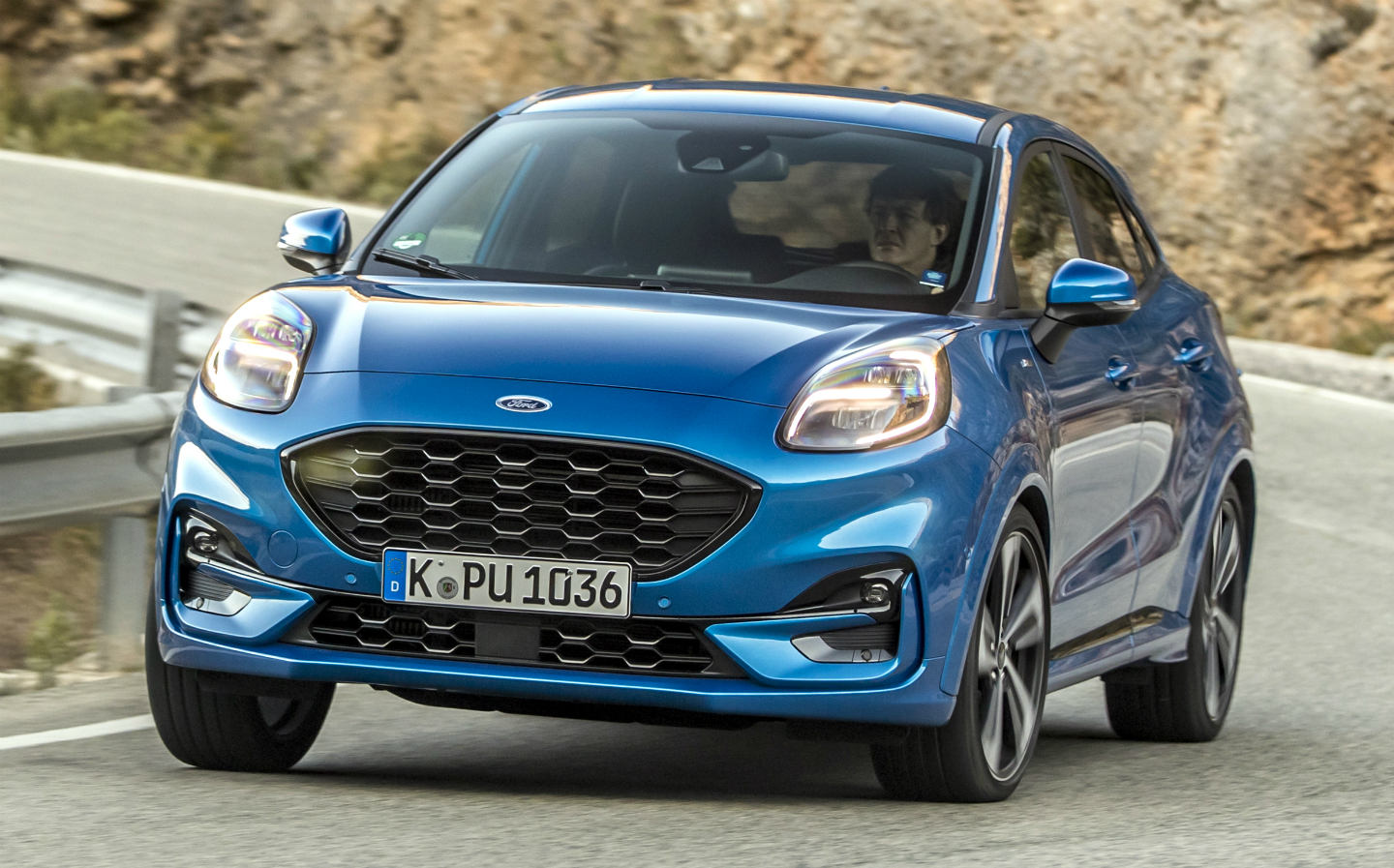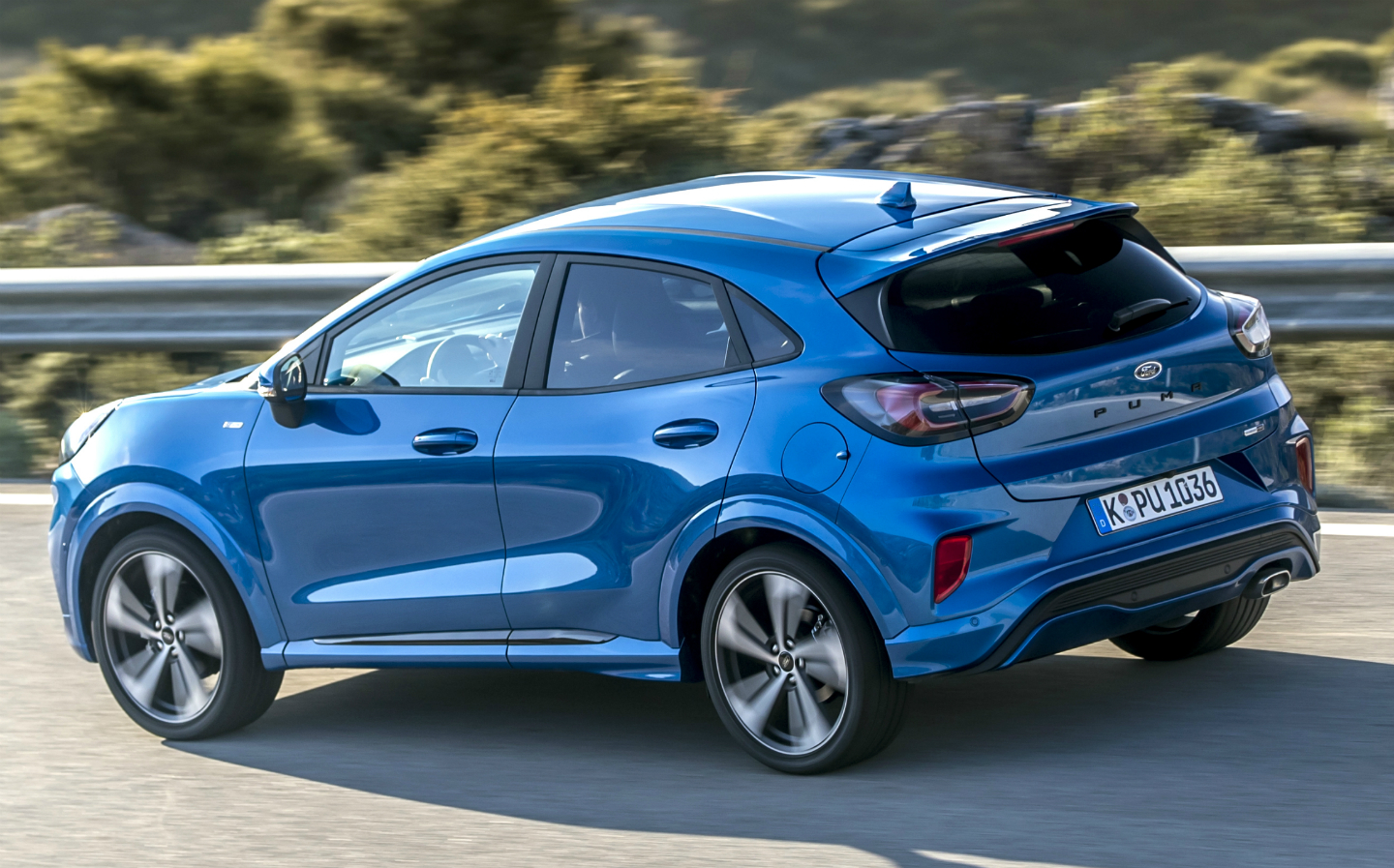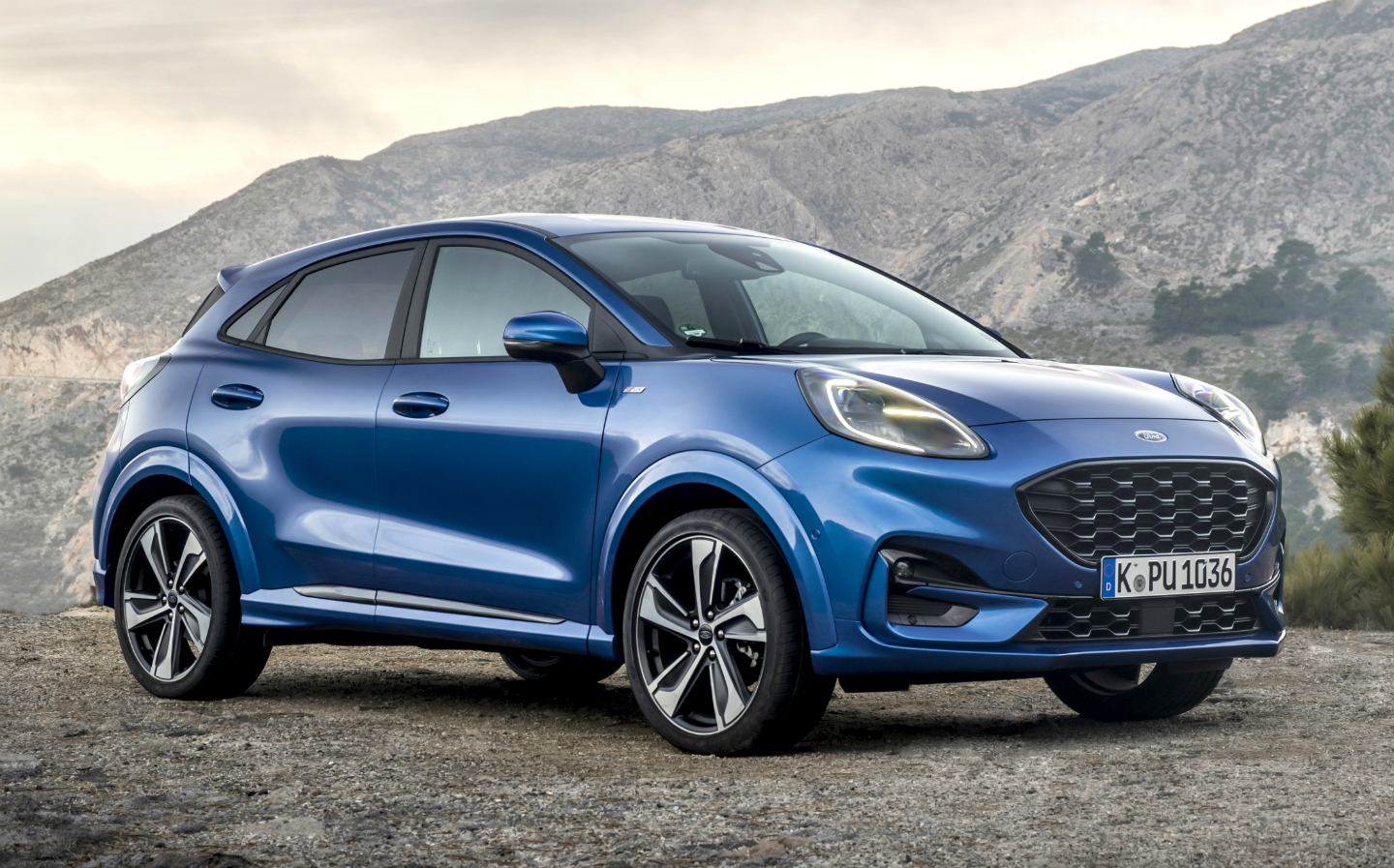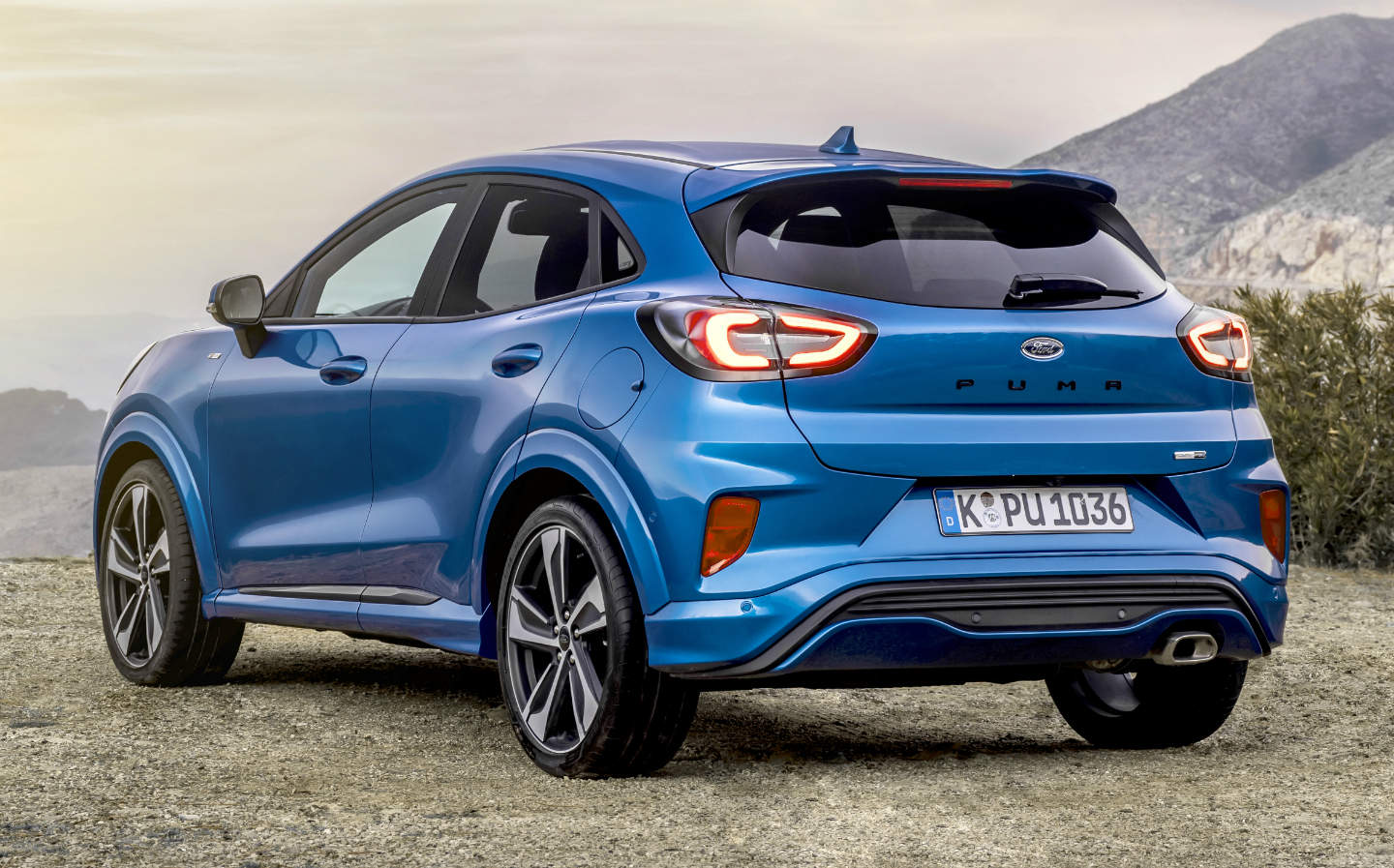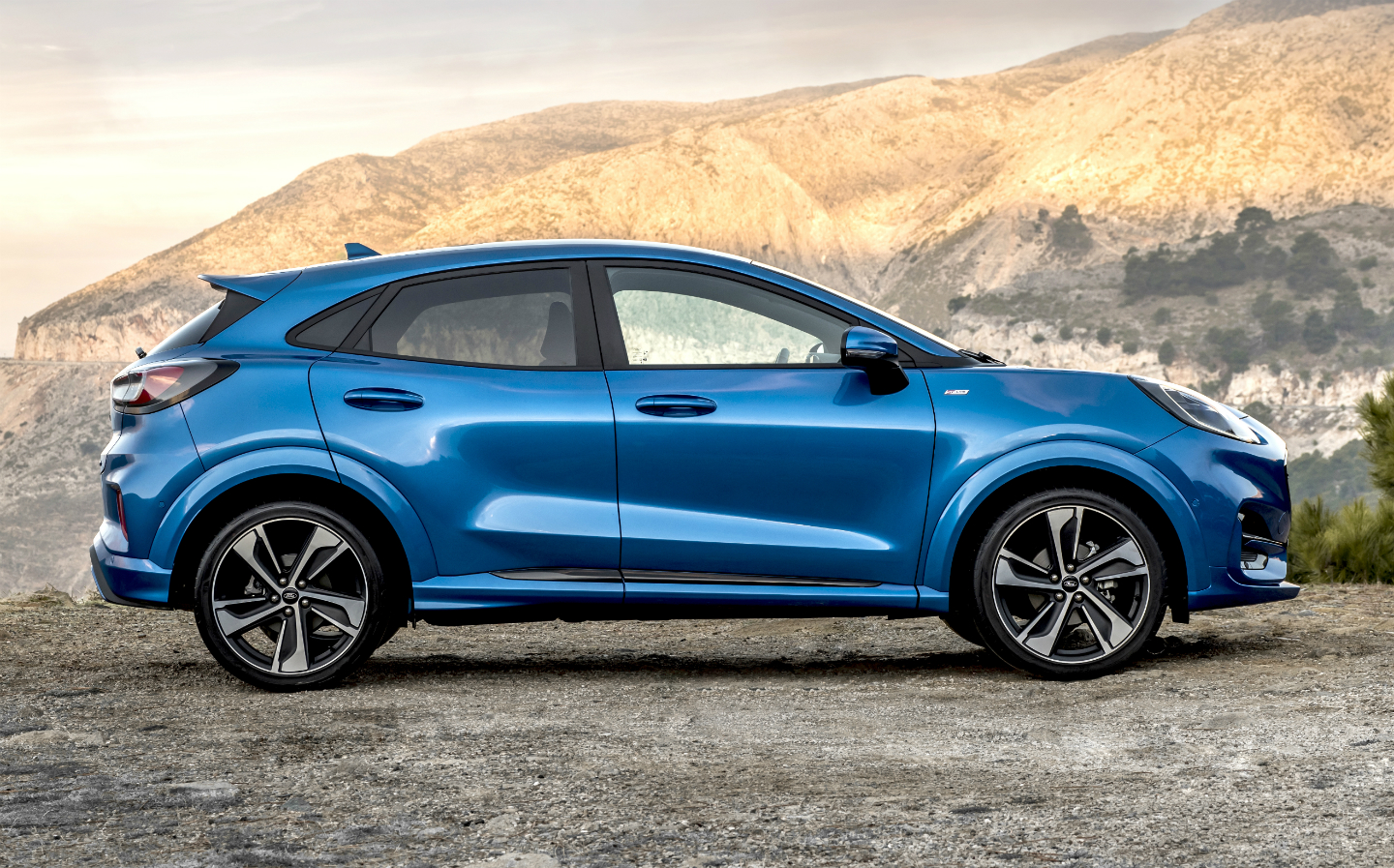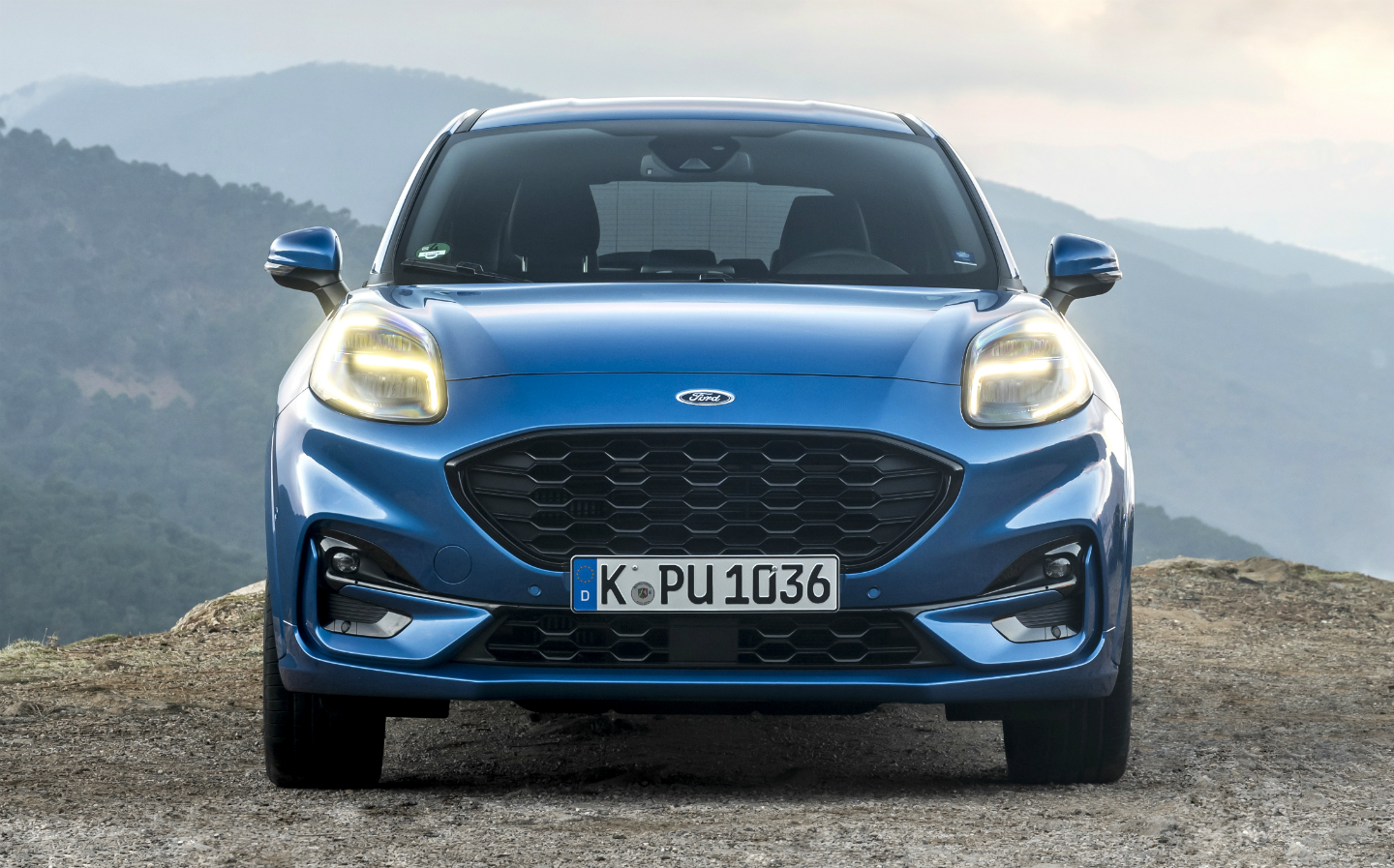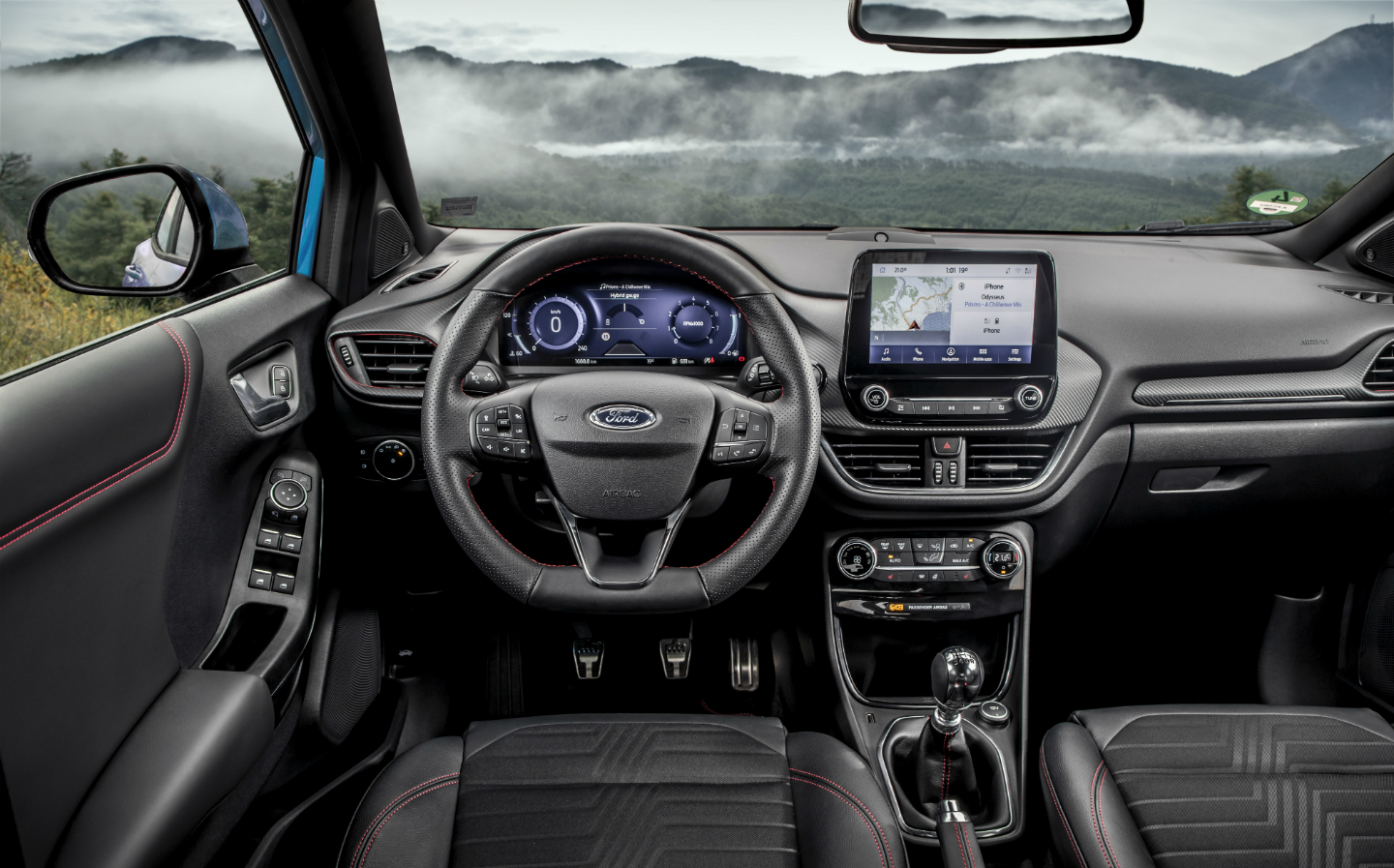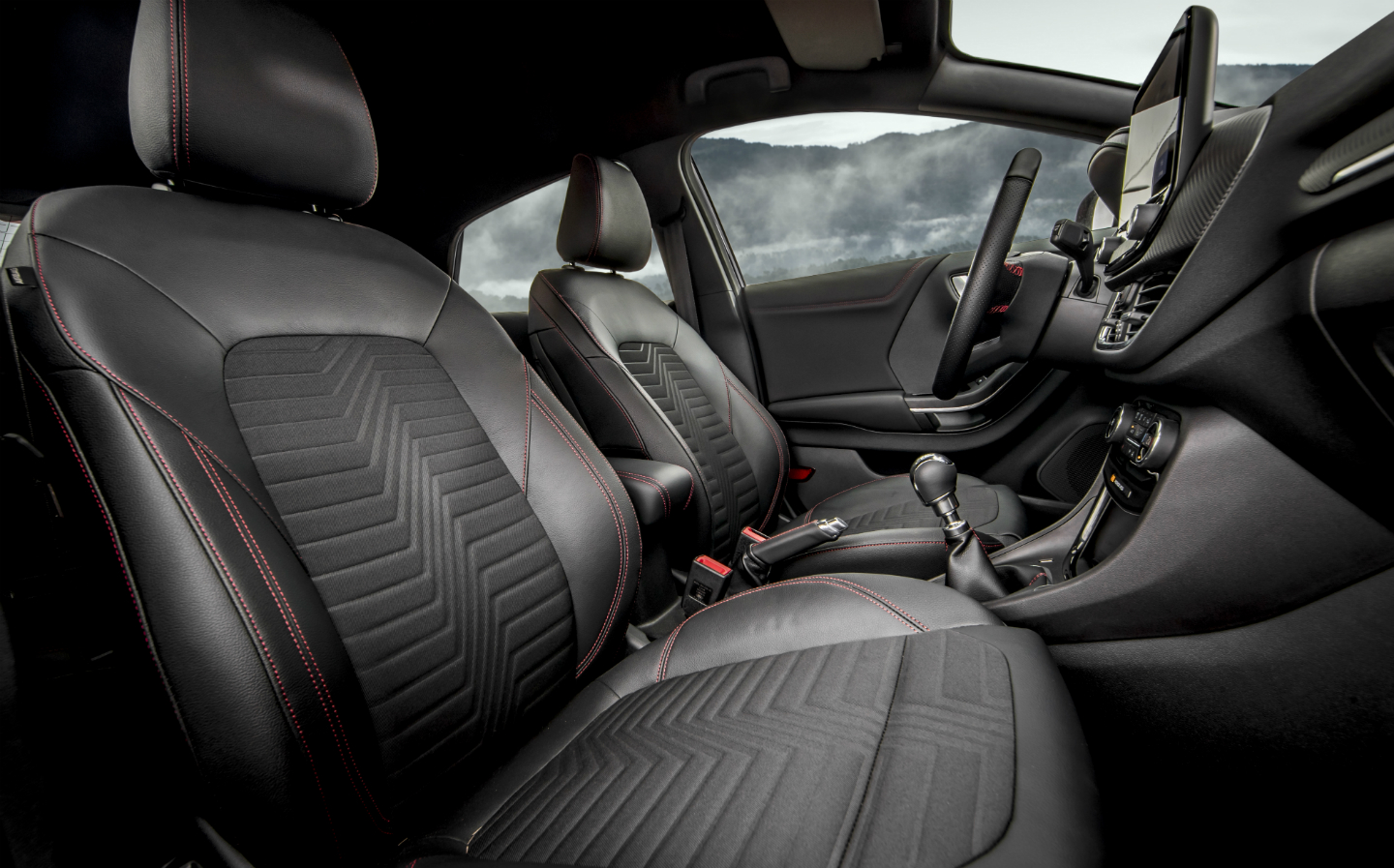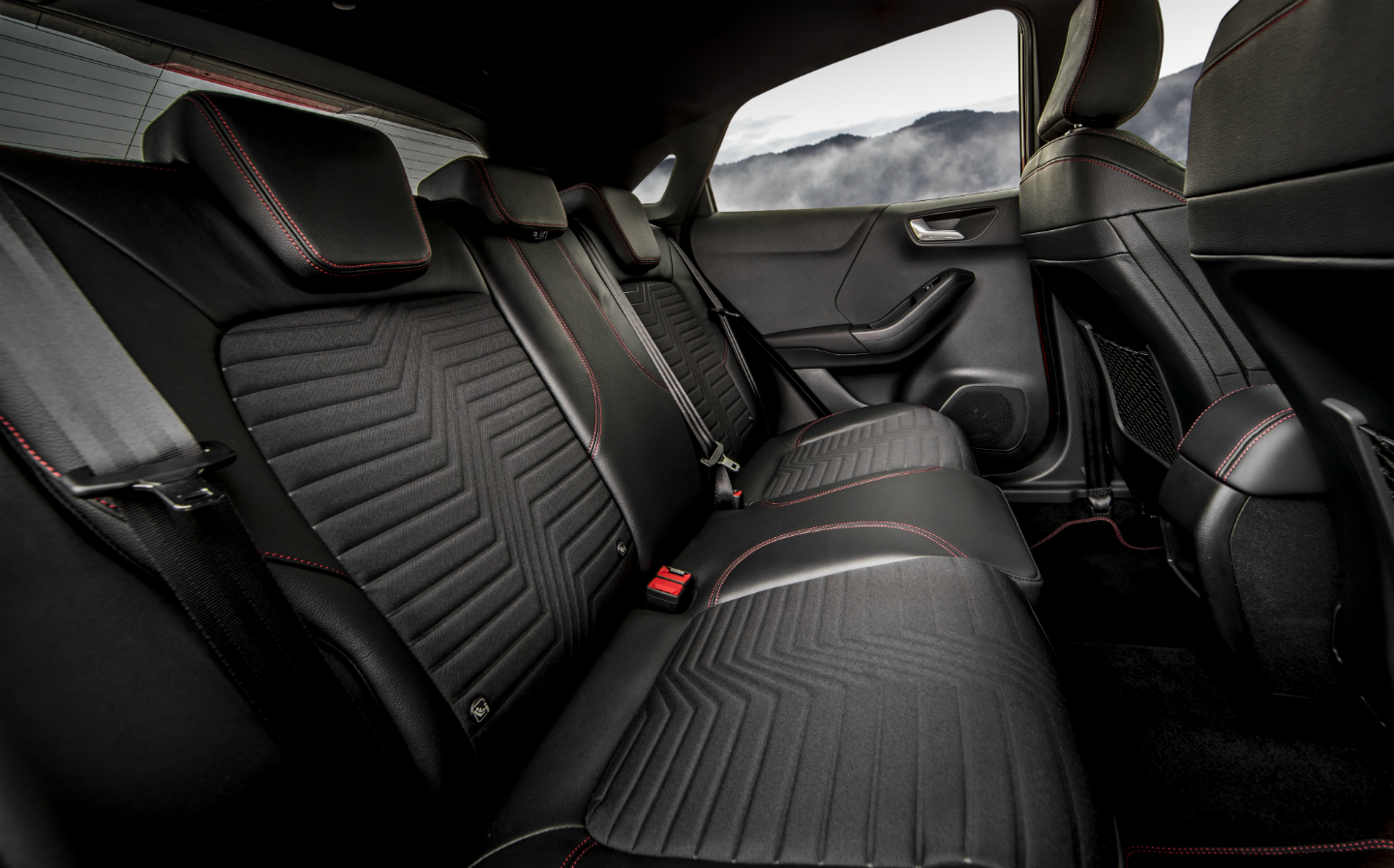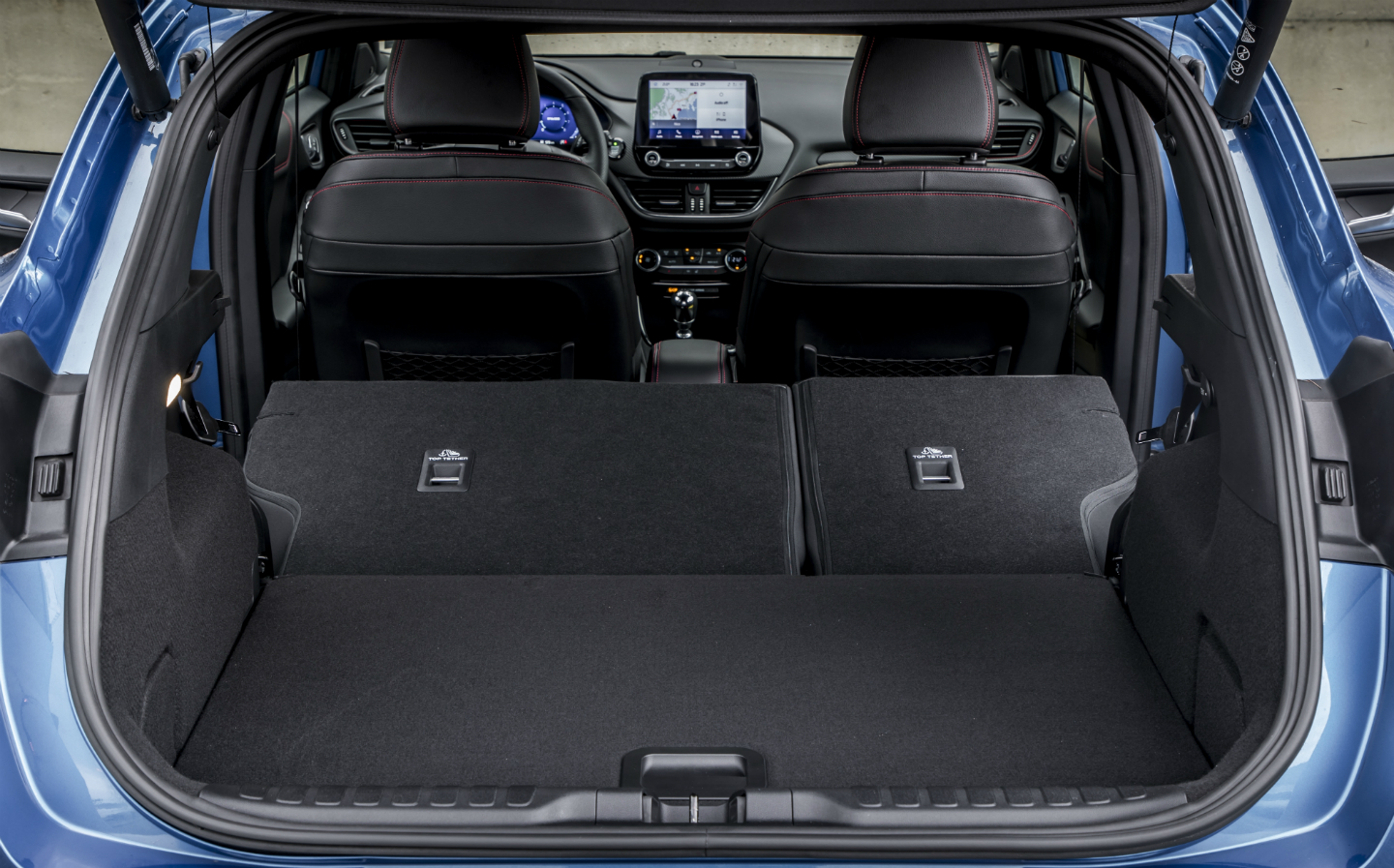2020 Ford Puma review
More perky pussycat than ferocious feline
THE ORIGINAL Ford Puma appeared in 1997 as a slinky two-door coupé version of the hugely popular Ford Fiesta. It was powered by a revvy 1.7-litre engine developed with motorcycle maestros Yamaha and had eye-popping styling that – in a first for Ford – was developed purely using computer-aided design.
Unfortunately, while designing a car using pixels rather than felt-tipped pens has become commonplace, small sporty coupe versions of hum-drum family hatchbacks haven’t stood the test of time. Instead, manufacturers have turned their attention to making high-riding crossovers, such as the VW T-Cross, Skoda Kamiq, Renault Captur and this, the all-new Ford Puma.
Just like its forebear, the new Puma uses the same platform as the excellent Fiesta but it wears a distinctly taller suit with more curvaceous tailoring than the likes of the boxy VW T-Cross and Skoda Kamiq.
The headlights, we’re told, were inspired by the ones on the racy GT supercar while the creased haunches stop the Puma’s backside from looking too upright. Sure, it’s no low-slung coupé, but for many it will have the likes of the overly fussy Toyota C-HR and Nissan Juke licked in the style stakes.
Sadly, you can’t say the same about the Puma’s interior. There’s nothing ostensibly wrong with it but the Fiesta-derived buttons, switches and trims don’t have the visual pizzazz of the Juke’s cabin and the infotainment system isn’t as easy to use as a VW T-Cross’s or Skoda Kamiq’s.
There isn’t quite as much space in the back of the Ford Puma as in the VW and Skoda, either and you can’t get it with the sliding rear seats offered by some compact crossovers to give rear legroom a helpful boost. That said, at least the rear windows are reasonably large so there’ll be less chance of young passengers feeling car sick than in a C-HR or Juke.
The Puma edges out almost every other small SUV when it comes to loading the boot, however. Its 456-litre capacity makes it one of the biggest of any crossover and you get loads of neat features including a parcel shelf that hides itself out of the way as you open the boot lid and an adjustable floor that you can stow away against the back seats.
There’s also the ‘Megabox’ – what Ford calls the 80-litre waterproof storage bin under the Puma’s floor. It’s the perfect place for chucking a few bits of muddy camping gear and the handy drain plug means you can rinse it out without worrying about filling the Puma’s boot with dirty water.
The new Puma uses the same platform as the excellent Fiesta but it wears a distinctly taller suit
There are some pretty clever features under the bonnet, too. Currently, you can get the Ford Puma with two 1-litre three-cylinder petrol engines developing 123bhp and 152bhp. Both come with a neat mild-hybrid system that helps reduce fuel consumption and boost in-gear acceleration.
Both models can cruise at motorway speeds without too much wind or tyre noise, but the Puma can’t soak up bumps quite as well as some less sporty small SUVs such as the VW T-Cross and Toyota C-HR.
You can’t get the Ford Puma with an automatic gearbox, either (for that you’ll have to wait until May 2020) but at least the standard six-speed manual is a doddle to use and compliments the rest of the Puma’s well-weighted controls. The brakes are progressive and the clutch is light and easy to use in town.
Head out onto a twisty road and you’ll find the steering gives you a good sense of the available grip and the Puma’s Fiesta-based suspension keeps its taller body in check through a series of tight corners. It’ll run rings around a Toyota C-HR and gives you more reason to smile than any other crossover.
Ford may not have resurrected the small sporty coupe in bringing back the Puma name, but this doesn’t mean this compact family car isn’t good fun to drive. Even if you aren’t looking for a thrill-a-minute SUV, the Ford Puma’s well-equipped cabin, sharp styling and seriously clever boot make it a great all-round family car.
Ford Puma rivals
Renault Captur
Skoda Kamiq
Volkswagen T-Cross
(Click to see how you could save at carwow)


